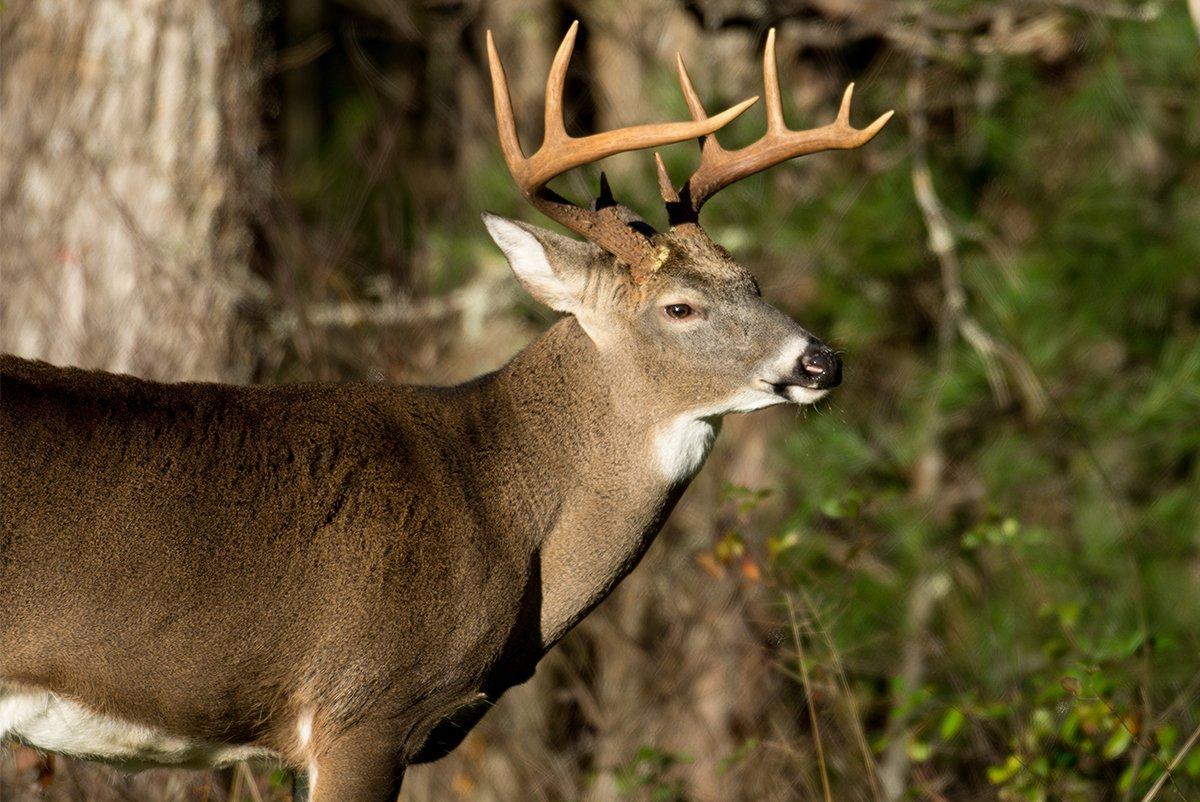It Takes Three Things to Get It Done
Even though Tes Jolly of Tuskegee, Ala., posted the comment, Gonna buy a lottery ticket! on her Facebook page after downing her third impressive buck of the season on her farm, she knew she owed her success to more than just luck. She chalked up her achievement to intensive land management and a little help from above.
My father, Ned Randle, bought the 209-acre farm back in 1987 to establish our family business, a greyhound breeding and training farm, Tes said. Farming and hunting are traditions in the Randle family so it wasn't long before we began managing the property for deer and other wildlife. My father loved this land and the animals on it, and he worked every day maintaining and managing it up until his death at the age of 93. I killed all three deer from his favorite chair in a rustic shooting house he built. I have no doubt he was truly with me during those hunts.
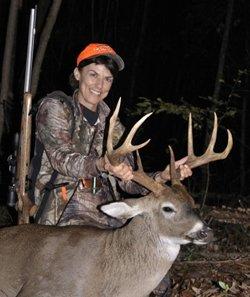
The buck had it all—width, mass, length and definitely weight, Tes said. He walked out into the food plot with approximately 18 does, and I dropped him with my muzzleloader. He had eight points, weighed 211 pounds and scored 134 3/8 inches — a great buck for South Central Alabama.
Tes's next hunt occurred on Dec. 28, two days before the full moon. She returned to the same food plots and watched as they filled up with deer just like the previous hunt. At approximately 4:50 p.m., a heavy-racked non-typical buck walked into the field.
He walked in front of me and stopped. I settled the crosshairs and pulled the trigger, but to my horror all I heard was a click. Bad primer! The buck snapped its head toward the shooting house and stared. I held my breath and prayed. With his tail at half-mast he started trotting away from me. I reloaded my Remington 700 bolt-action. Then he stopped almost exactly where the first buck had stood. A moment later the buck was on the ground. He was originally an 11-pointer — five on the left and a forked main beam on the right, but he'd broken off the three brow tines previous to the kill, leaving eight countable points.
The third hunt occurred on January 28, again two days before the full moon. Like déjà vu, another impressive buck walked out into the same field just yards from where the other two had stood. Tes knew that buck well from the game camera images. She and her husband, Ron, had nicknamed it Hoss for its large body mass. Tes squeezed the trigger and the wide 8-pointer dropped in his tracks. He weighed 225 pounds and had a 20-inch inside spread.
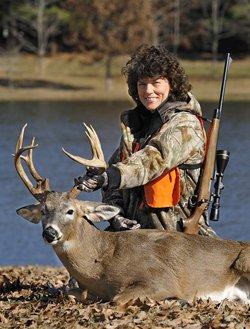
Ron and I practice basic QDM principles and thankfully, our neighbors do too. After a few short years it's certainly paying off. We let young bucks walk and only shoot a buck that meets three of the following criteria: It must weigh at least 185 pounds, have a 16-inch inside spread, 5-inch antler bases, 18- to 20-inch beam length and 6-inch tines. If it meets any three of these standards, chances are it's at least a 3-year-old buck. I also look for a sagging neck, a slight sway in the back, a pot belly and muscular hams and shoulders. Of course, if we have kids, special-needs hunters, or first-time hunters on the property, we'll vary these guidelines to fit the hunter's experience level.
Although land management has also played a huge role in her success, Tes and her father never cared about producing huge bucks on the property; they simply wanted to do what was best for the wildlife.
Wildlife need food, cover and water, Tes said. When you provide all three on a small piece of property, the wildlife viewing and hunting opportunities improve.
Prior to their purchase, the land had been unfarmed for nine years during which time pine and briars had taken over the property. Ned spent the first months bush hogging, and Tes spent that time pulling old fences and posts.
The property features a three-acre pond, rolling open pastureland, micro pine plantations and three long hardwood finger ridges with deep draws between that drop off into a creek bottom, which eventually spreads into a huge swamp, Tes said. Dad and I planted food plots on the tops of each of these ridges. He built additional ponds, roads and dusting lanes. We kept the old pastureland baled and open for turkeys.
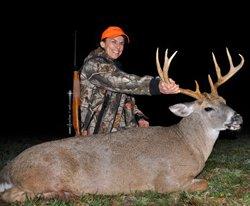
The property also boasts 11 food plots ranging in size up to five acres. The plantings change each year.
Most years we plant our own winter mix of wheat, oats and Dixie crimson clover, Tes said. We also field test seed blends and purchase prepackaged seed mixes. Summer plots feature chufa, Durana white clover, Yucchi arrowleaf clover and chicory. We want our food plots to produce nutrition throughout the year. Providing the deer with quality food sources year-round is one of the reasons that we've seen an increase in the body weights and antler quality of whitetails.
Back in the 1980s and 1990s, the family rarely saw a quality buck on the property, but now they see impressive bucks on a regular basis.
The Jollys also tend to the native plants such as blackberry and dewberry thickets, and they've planted an abundance of trees throughout the property including crab apple, persimmon, Sawtooth oak, dogwoods, swamp chestnut and white oak.
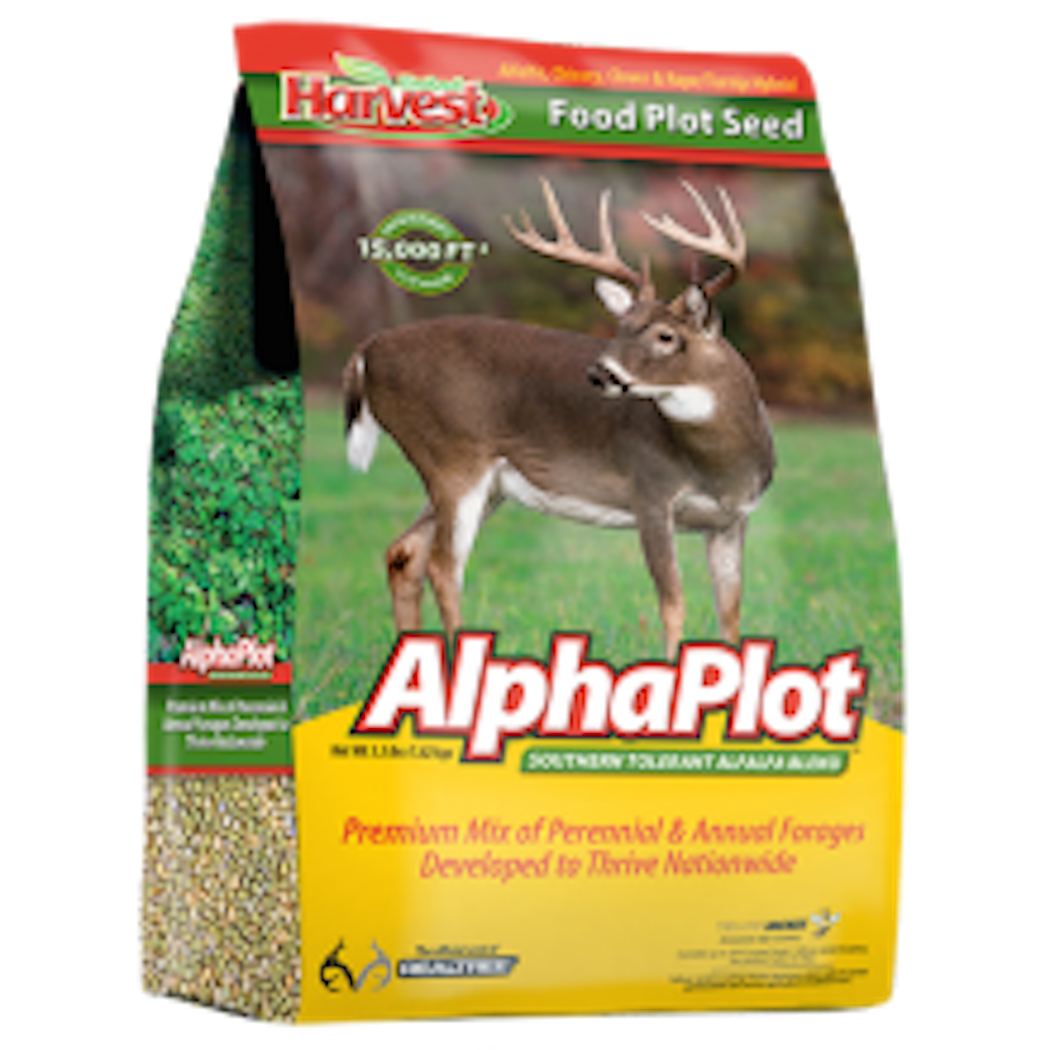
The Moultrie Feeders also attract a ton of wildlife that we can view from our pond deck in the evenings, Tes said.
The hard work has definitely paid off. Not only is the property producing impressive bucks, but it recently was certified as an Alabama Treasure Forest, which is quite an honor in Alabama.
I didn't realize how much work goes into managing 200 acres of land until my dad passed a year ago. Ron and I could literally do nothing else but work on the farm and still not get it all done, but I wouldn't change it for anything. My dad had a vision, and I worked alongside of him to turn that vision into reality. Ron joined the effort when we married in 1996, and it's our goal to see that Dad's dedication to wildlife and the land carries on.
Editor's Note: This was originally published October 31, 2010.
Click here for more deer hunting articles and videos.
Check us out on Facebook.


